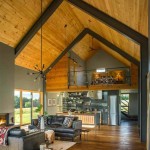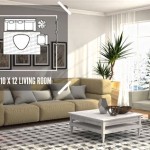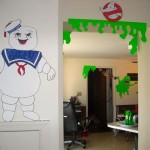Classy Dorm Room Decorating Ideas
Dorm rooms, traditionally spaces associated with minimalist design and practicality, can be transformed into stylish and personalized living areas. By incorporating intentional design choices, students can create dorm rooms that reflect their individual tastes while maintaining an atmosphere conducive to studying and relaxation. This article will explore various decorating ideas that elevate the aesthetic appeal of a dorm room, emphasizing sophistication and functionality. These ideas range from strategic color palettes and smart storage solutions to the careful selection of textiles and decorative accessories.
Color Palette Strategy
The foundation of any well-designed space begins with a carefully chosen color palette. In the context of a dorm room, where space is often limited, color plays a crucial role in creating a sense of openness and visual harmony. Opting for a cohesive color scheme can unify the various elements of the room, preventing a cluttered or disjointed appearance. Neutral colors, such as soft grays, creams, and muted blues, are excellent choices for the walls and larger furniture pieces. These colors provide a versatile backdrop that can be complemented by bolder accent colors in smaller accessories.
Consider the psychological effects of different colors. For example, blues and greens are often associated with calmness and tranquility, making them ideal for creating a relaxing study environment. Warmer tones, such as yellows and oranges, can evoke feelings of energy and optimism, but should be used sparingly to avoid overwhelming the space. Implementing a 60-30-10 rule can be beneficial: 60% of the room should be the dominant color, 30% a secondary color, and 10% an accent color. This ensures a balanced and visually appealing aesthetic.
Beyond paint, color can be introduced through textiles, art, and accessories. A patterned rug in a complementary color scheme can add visual interest and define the living area. Throw pillows and blankets in various shades of the chosen palette can further enhance the cohesive look. Art prints featuring the same color tones can tie the entire room together, creating a unified and intentional design.
Optimizing Space Through Storage Solutions
Dorm rooms are notoriously small, making efficient storage solutions a necessity. Effective storage not only declutters the space but also contributes to a more organized and aesthetically pleasing environment. Vertical storage is particularly valuable in dorm rooms, utilizing wall space to maximize functionality. Shelving units, wall-mounted organizers, and over-the-door hangers are all excellent options for storing books, supplies, and personal belongings.
Consider furniture with built-in storage. Ottomans with hidden compartments, beds with under-bed storage drawers, and desks with ample shelving can provide extra space without sacrificing style. Utilize storage bins and baskets to organize smaller items such as toiletries, electronics, and clothing. Labeling these containers can further enhance organization and make it easier to locate items quickly.
Maximizing closet space is also crucial. Utilize tiered hangers to hang multiple garments in the space of one. Shoe organizers can keep footwear neatly arranged and prevent clutter on the floor. Consider using vacuum-sealed bags to compress bulky items such as winter clothing or extra blankets, freeing up valuable closet space. A well-organized closet not only improves the overall aesthetic of the room but also makes it easier to maintain a tidy living environment.
Furthermore, consider the visual impact of storage solutions. Opt for storage containers in neutral colors or materials that complement the overall design scheme. Wicker baskets, wooden crates, and fabric-covered bins can add texture and visual interest while providing practical storage solutions. Avoid using mismatched or overly colorful containers, as these can create a cluttered and unorganized appearance.
Textiles and Decorative Accessories: Adding Personality
Textiles and decorative accessories are essential for adding personality and warmth to a dorm room. These elements can transform a basic space into a personalized and inviting environment. Choosing the right textiles, such as bedding, curtains, rugs, and throw pillows, can significantly impact the overall aesthetic of the room.
Invest in high-quality bedding that reflects personal style. A duvet cover in a sophisticated pattern or texture can serve as a focal point in the room. Opt for soft, comfortable fabrics such as cotton or linen for a restful sleep environment. Layering bedding with throws and decorative pillows can add depth and visual interest. Consider using a bed skirt to conceal under-bed storage and create a cleaner, more polished look.
Curtains can add privacy, filter light, and enhance the overall aesthetic of the room. Choose curtains that complement the color palette and add texture to the space. Blackout curtains can be particularly beneficial for blocking out unwanted light and creating a more conducive sleep environment. Consider the length of the curtains, ensuring they reach the floor for a more elegant and sophisticated look.
Rugs can define the living area and add warmth and comfort to the room. Choose a rug that complements the color palette and adds visual interest to the space. Consider the size of the rug, ensuring it is large enough to anchor the furniture and create a cohesive seating area. Rugs made from durable materials such as wool or synthetic fibers are ideal for high-traffic areas in dorm rooms.
Decorative accessories, such as artwork, plants, and lighting, can further personalize the space. Choose artwork that reflects personal taste and adds visual interest to the walls. Framed prints, posters, and photographs can create a gallery wall that showcases individuality. Incorporate plants to add a touch of nature and create a more welcoming environment. Low-maintenance plants such as succulents and snake plants are ideal for dorm rooms.
Lighting is crucial for creating a functional and aesthetically pleasing space. Layer lighting with a combination of ambient, task, and accent lighting. A desk lamp provides focused light for studying, while a floor lamp can add ambient light to the room. String lights or fairy lights can create a cozy and inviting atmosphere. Choose lighting fixtures that complement the overall design scheme and add a touch of personality to the space.
Strategic Lighting Considerations
Lighting is often an overlooked aspect of dorm room design, yet it significantly impacts the ambiance and functionality of the space. Dorm rooms typically come equipped with basic, often harsh, overhead lighting. Supplementing this with strategic lighting choices can dramatically improve the room's atmosphere and create a more welcoming and productive environment. A combination of ambient, task, and accent lighting is ideal for creating a well-lit and visually appealing dorm room.
Ambient lighting provides overall illumination and sets the mood of the room. Rather than relying solely on the overhead fixture, consider adding a floor lamp or a table lamp with a soft, diffused light. These can be strategically placed to provide even illumination without being too harsh. Lamps with adjustable brightness settings are particularly useful, allowing for customization based on the time of day and activity.
Task lighting is essential for studying and other activities requiring focused illumination. A desk lamp with an adjustable arm and head is ideal for providing directed light without causing glare or eye strain. Opt for lamps with LED bulbs, which are energy-efficient and provide bright, consistent light. The placement of the desk lamp is also important; it should be positioned to minimize shadows and provide optimal illumination for the work area.
Accent lighting is used to highlight specific features or create visual interest in the room. String lights, fairy lights, or small spotlights can be used to draw attention to artwork, plants, or other decorative elements. These types of lighting can also be used to create a cozy and inviting atmosphere. Consider using battery-operated lights or lights with timers for added convenience and energy savings.
Furthermore, consider the color temperature of the light bulbs. Warm white or soft white light bulbs create a more relaxing and inviting atmosphere, while cool white or daylight light bulbs provide brighter and more energizing light. Experiment with different color temperatures to find what works best for the individual's preferences and activities.
Creating a Functional Study Space
A well-designed study space is essential for academic success in a dorm room. Creating a functional and organized study area can enhance focus, productivity, and overall learning experience. The study space should be separate from the sleeping area, if possible, to minimize distractions and create a clear distinction between work and rest. A designated desk or table is the centerpiece of the study space, providing a dedicated surface for books, laptops, and other study materials.
Ergonomics are crucial for maintaining comfort and preventing strain during long study sessions. Choose a desk chair that provides adequate support and is adjustable to ensure proper posture. The desk should be at a height that allows the user to sit comfortably with their feet flat on the floor and their elbows at a 90-degree angle. Consider using a monitor stand or laptop riser to elevate the screen to eye level, reducing neck strain.
Organization is key to creating a functional study space. Utilize desk organizers, shelving units, and drawers to keep study materials neatly arranged and easily accessible. A filing system can help keep important documents and notes organized. A whiteboard or bulletin board can be used to jot down ideas, track deadlines, and display important information. Minimize clutter on the desk to create a clean and focused workspace.
Lighting is also crucial for the study space. A desk lamp with adjustable brightness and direction is essential for providing focused illumination without causing glare. Natural light is also beneficial for studying, so position the desk near a window if possible. Avoid studying in dimly lit areas, as this can cause eye strain and fatigue.
Minimize distractions in the study space. Keep the area free from unnecessary noise and visual clutter. Consider using noise-canceling headphones or earplugs to block out distractions. If possible, create a physical barrier between the study space and the rest of the room, such as a room divider or a bookshelf.

65 Dorm Room Decorating Ideas Decor Essentials

22 Trendy Space Saving Dorm Decor Ideas Extra Storage

20 College Dorm Decor Ideas

65 Dorm Room Decorating Ideas Decor Essentials

51 Elegant Dorm Room Decorating Ideas Godiygo Com Designs Inspiration Decor

65 Dorm Room Decorating Ideas Decor Essentials

89 Elegant Dorm Room Decorating Ideas 1 Home Designs Cozy College Decor

Dorm Room Ideas Archives Page 2 Of By Sophia Lee

Girls Dorm Room Decor Ideas

10 Super Stylish Dorm Room Ideas Homemydesign







